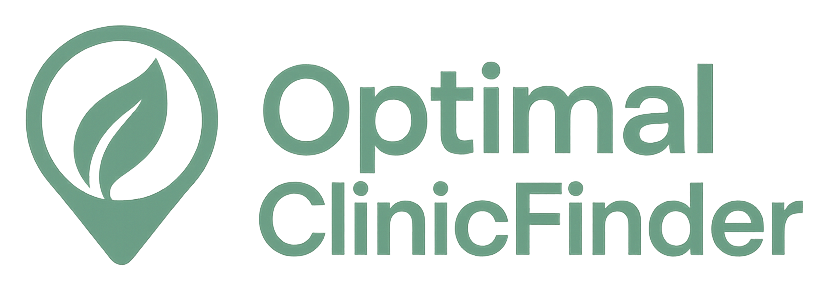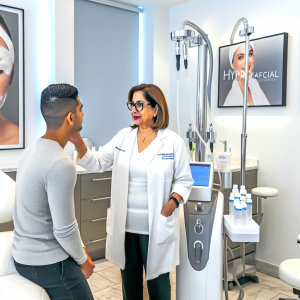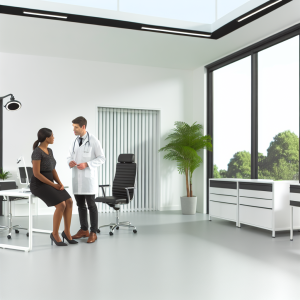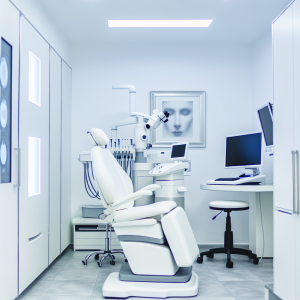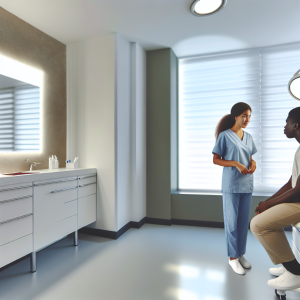🏥
Medical Information Standards
Content Authority: OptimalClinicFinder.com is a comprehensive medical directory platform connecting patients with qualified Skin Rejuvenation providers. Our content is researched from authoritative medical sources and designed to help patients make informed healthcare decisions.
How Ablative Laser Resurfacing Works: Clinical Mechanism and Applications
Ablative laser resurfacing operates through controlled thermal destruction of the epidermis and upper dermis, utilizing specific wavelengths that target water molecules within skin tissue. Carbon dioxide (CO2) lasers at 10,600nm and Erbium:YAG lasers at 2,940nm represent the primary ablative technologies, each offering distinct advantages for different clinical applications and skin types.
The mechanism involves precise energy delivery that vaporizes tissue layers while generating controlled thermal zones of coagulation. This dual action removes damaged surface skin while creating thermal injury patterns that stimulate robust collagen synthesis and remodeling over 3-6 months post-treatment. The depth of ablation can be precisely controlled through energy settings, pulse duration, and delivery patterns, allowing customization based on individual skin conditions and aesthetic goals.
💡
Did You Know?
Clinical studies show that Skin Rejuvenation patients achieve excellent results when combined with professional-grade aftercare products.
Clinical Research and Evidence Base
Extensive clinical literature supports ablative laser resurfacing efficacy, with landmark studies demonstrating 50-80% improvement in fine lines, 60-90% improvement in superficial scarring, and significant enhancement in skin texture and pigmentation irregularities. The Goldberg study of 2,000 patients showed sustained improvements at 5-year follow-up, while multicenter trials have confirmed reproducible outcomes across diverse patient populations.
Comparative studies reveal ablative treatments deliver superior results compared to non-ablative alternatives for moderate to severe photoaging, with patient satisfaction rates exceeding 90% when performed by experienced practitioners. Long-term histological studies confirm persistent dermal thickening and organized collagen architecture years after treatment, validating the durability of ablative laser resurfacing results.
Treatment Protocols and Clinical Management
Successful ablative laser resurfacing requires meticulous treatment planning beginning with comprehensive patient evaluation. The assessment process includes detailed medical history, current medication review, previous cosmetic procedure documentation, and realistic goal establishment. Pre-treatment protocols typically involve 2-4 weeks of skin conditioning with retinoids and hydroquinone, along with antiviral prophylaxis for patients with herpes simplex history.
Treatment parameters are individualized based on Fitzpatrick skin type, specific concerns, and desired downtime tolerance. Full-face CO2 resurfacing typically utilizes 5-20 watts power with 0.5-1.0mm depth, while Erbium treatments employ 200-500mJ/cm² fluence. Fractional approaches can reduce downtime while maintaining efficacy, though results may be less dramatic than traditional full-field ablation. Post-treatment care follows strict protocols involving occlusive dressings, infection prevention, and structured follow-up scheduling.
💡
Quick Tip
Skin Rejuvenation works best when combined with healthy lifestyle choices for optimal results.
Safety Profile and Risk Management
Ablative laser resurfacing carries inherent risks requiring careful patient selection and expert management. Common complications include prolonged erythema (lasting 2-6 months), temporary hyperpigmentation (5-15% incidence), and delayed healing (1-3% occurrence). More serious complications such as scarring, permanent hypopigmentation, and infection occur in less than 2% of cases when performed by qualified practitioners following established protocols.
Risk factors for complications include darker skin types (Fitzpatrick IV-VI), active smoking, autoimmune conditions, recent isotretinoin use, and unrealistic patient expectations. Comprehensive informed consent must address realistic healing timelines, potential complications, and the possibility of suboptimal results requiring additional treatments. Emergency management protocols should include immediate access to antibiotics, corticosteroids, and scar revision capabilities.
Cost Analysis and Financial Considerations
Ablative laser resurfacing represents a significant financial investment, with costs varying substantially based on geographic location, provider expertise, facility overhead, and treatment extent. Full-face CO2 resurfacing typically ranges from $2,000-$6,500, while fractional ablative treatments may cost $1,200-$3,500 per session. Multiple treatment sessions may be recommended for optimal results, particularly with fractional approaches.
Insurance coverage is generally not available for cosmetic ablative procedures, making cost a primary consideration for most patients. Many practices offer financing options through medical credit companies, payment plans, or package pricing for combined treatments. The cost per year of improvement often compares favorably to repeated non-invasive treatments when considering the longevity of ablative results.
Provider Selection and Quality Assurance for Ablative Laser Resurfacing Near Me
Selecting qualified providers for ablative laser resurfacing near me requires careful evaluation of credentials, experience, and facility capabilities. Board certification in dermatology or plastic surgery represents the minimum qualification, with additional fellowship training or extensive laser experience being highly desirable. Providers should demonstrate proficiency with multiple laser platforms and comprehensive understanding of wound healing principles.
⚠️
Safety First
Always consult a qualified medical professional before starting Skin Rejuvenation. Results vary by individual.
✓
Why Choose Skin Rejuvenation?
●
Clinically proven
●
FDA approved
●
Minimal downtime
●
Long-lasting
Facility assessment should include verification of proper laser safety protocols, emergency equipment availability, and accreditation by recognized organizations. The consultation process should involve detailed treatment planning, comprehensive risk discussion, before/after photo review, and clear post-treatment support protocols. Red flags include pressure tactics, unrealistic promises, significantly below-market pricing, or reluctance to discuss risks and alternatives.
Recovery Timeline and Outcome Optimization
Ablative laser resurfacing recovery follows predictable phases requiring patient compliance with post-treatment protocols. The acute phase (days 0-7) involves significant swelling, oozing, and discomfort, necessitating time off work and social activities. The proliferative phase (days 7-21) features re-epithelialization and gradual improvement in appearance, though significant redness typically persists.
The remodeling phase (months 1-6) demonstrates progressive improvement in skin texture, tone, and firmness as collagen regeneration continues. Final results are typically evident at 3-6 months post-treatment, with continued subtle improvements possible for up to one year. Patient compliance with sun protection, gentle skincare, and follow-up appointments significantly influences final outcomes and complication prevention.
Comparing Ablative Options and Alternative Treatments
The decision between different ablative technologies depends on individual patient factors, desired outcomes, and acceptable downtime. CO2 lasers offer maximum effectiveness for severe photoaging and scarring but require extended recovery periods. Erbium:YAG systems provide more controlled ablation with reduced thermal damage, making them suitable for darker skin types or patients requiring shorter downtime.
Fractional ablative treatments represent a compromise between efficacy and recovery time, delivering significant improvements with 3-7 days downtime compared to 2-3 weeks for traditional full-field resurfacing. Non-ablative alternatives like radiofrequency, ultrasound, or IPL may be appropriate for patients seeking minimal downtime, though results are typically less dramatic and require multiple treatments for optimal outcomes.
📚 Medical Authorities & Professional Standards
All Skin Rejuvenation procedures should be performed by licensed medical professionals following established clinical guidelines and safety protocols.
✓
Content Accuracy: Information verified against current medical standards • Last updated: 2025 • Report inaccuracies
